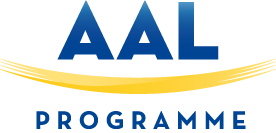FORTO
Home » Success Stories » FORTO
01. Introduction
The FORTO and FORTO 2.0 projects aimed to develop a self-assessment tool for monitoring muscle fatigability in older adults. The goal was to create a user-friendly device and supporting system to detect small changes in physical reserves, providing an early warning for health deterioration. FORTO 2.0 focused on evolving the initial prototype into a commercial-grade platform with enhanced data recording and monitoring capabilities.
02. Summary of the project aims and objectives
FORTO Project (2020)
The initial FORTO project aimed to develop a device to assess muscle fatigability and detect early signs of declining health in older adults. The primary application was to act as an early warning system for potential health issues, allowing for timely intervention and monitoring of recovery after hospital discharge.
FORTO 2.0 Project (2021)
Building on the initial success of FORTO, the second phase focused on commercialising the prototype, integrating smart self-assessment features, and creating a robust monitoring platform. The new system records longitudinal data and acts as an early indicator of reduced resistance and delayed recovery from health stressors.
03.Product development and key features
Main Product: The eFORTO
The eFORTO device is a self-assessment tool for older adults to monitor muscle fatigability. It uses a user-friendly device connected to a mobile app for tracking strength, muscle performance, and recovery patterns. The device can detect early signs of health deterioration long before traditional methods and provides progress monitoring via a digital platform. The product is available as a health device since November 2023.
Key Features
- Early detection of muscle fatigability and strength loss.
- Real-time feedback and interactive encouragement during self-assessment.
- Longitudinal data recording for continuous health monitoring.
- Adaptable for both independent and supervised use.
- Integration with clinical monitoring for healthcare professionals.
04. Partners
Both FORTO and FORTO 2.0 involved the same six partners:
- Vrije Universiteit Brussel (R&D, Belgium) [Coordinator]
- Instituto de Telecomunicacoes (R&D, Portugal)
- Radboud University Medical Center (R&D, Netherlands)
- Universitair Ziekenhuis Brussel (Large company, Belgium)
- UNIWEB (SME, Belgium)
- Ziekenhuisgroep Twente (End-users, Netherlands)
05.Impact on participating in an AAL project
Key Takeaways
- AAL funding enabled the development of a science-based, user-friendly product, aligning academic research with commercial needs.
- The project increased the visibility and credibility of the partners, particularly Vrije Universiteit Brussel and UNIWEB, including establishing connections with the WHO.
- The success of FORTO led to larger follow-up projects with a focus on clinical validation and commercialisation.
06. Main learnings from developing a solution through an AAL project
Organisational impacts
- Enhanced understanding of bridging the gap between academic research and marketable solutions.
- Improved collaboration between academia and industry, fostering mutual understanding and practical implementation.
- Gained experience in regulatory compliance and quality monitoring.
07. Impact on networking and collaboration
Building partnerships
- The project facilitated partnerships across Europe, bringing together R&D institutions, healthcare providers, and industry partners.
- Connections established during FORTO led to involvement in new international projects, including collaboration with the WHO on healthy ageing.
08. Perceived benefits of participating in AAL Support Actions
- Participation in AAL2Business workshops provided insights into sustainable business models and commercialisation strategies.
09. How AAL supported development and market adoption
User involvement
- User testing conducted in Belgium and the Netherlands provided critical feedback, allowing the product to be adapted for different healthcare contexts.
- The AAL Programme’s support helped accelerate the development from prototype to commercial product, especially in addressing usability and data recording features.
10. Challenges encountered
- Regulatory barriers: Transforming the device from a health tool to a certified medical device requires extensive clinical validation.
- Market barriers: Generating interest from healthcare professionals and policy-level stakeholders requires demonstrated clinical efficacy.
- Technical challenges: Developing a system that accurately measures muscle fatigue while being user-friendly and engaging.
11. Actions needed to launch the product
- Complete clinical trials to transition the product from a health device to a medical device.
- Implement targeted marketing strategies to reach healthcare professionals and older adult users.
- Develop partnerships with healthcare institutions and policymakers to validate and promote the product.
12. Next steps
Target end-users
- Primary: Older adults using the device for self-monitoring.
- Secondary: Healthcare professionals in hospitals and care homes using the platform for patient monitoring.
- Tertiary: Policy-level stakeholders interested in monitoring health trends and healthy ageing.
Commercial Strategy
- Focus on European markets, starting with Belgium and the Netherlands, followed by expansion to Germany, France, and the UK.
- Explore opportunities in international markets, including Kuwait, as part of national health surveys.
- Develop partnerships with healthcare insurers and elderly care providers to embed the solution in care pathways.
